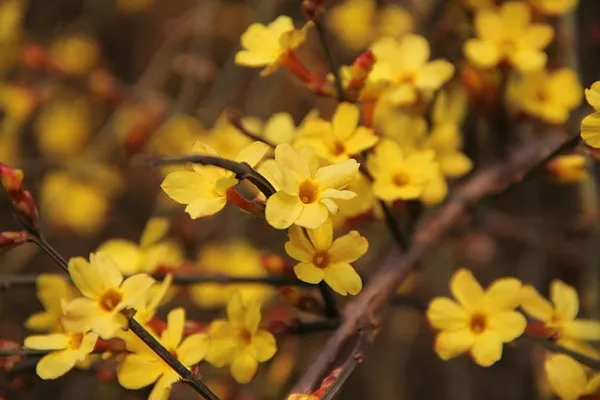Flowering plants, also known as angiosperms, represent the most diverse and dominant group of plants on Earth. With an estimated 300,000 to 400,000 species, they exhibit an astonishing array of forms, sizes, colors, and adaptations. Understanding the various types of flowering plants is crucial for botanists, horticulturists, and nature enthusiasts alike. In this article, we will delve into the fascinating world of flowering plants, exploring their classifications and diverse characteristics.
Dicots and Monocots: The Fundamental Division
Flowering plants are broadly classified into two main groups: dicots and monocots, based on the number of cotyledons, or seed leaves, in the embryo. Dicots typically have two cotyledons, while monocots have only one. This fundamental division has profound implications for plant structure, growth, and reproduction.
Dicots: Representing the majority of flowering plants, dicots include familiar garden plants like roses, sunflowers, and oaks. They often have net-like venation in their leaves and flower parts in multiples of four or five.
Monocots: Monocots, on the other hand, encompass plants such as grasses, lilies, and orchids. Characterized by parallel venation in their leaves and flower parts in multiples of three, monocots exhibit unique growth patterns, including scattered vascular bundles in their stems.
Herbaceous and Woody Plants: Distinct Growth Habits
Another essential classification of flowering plants is based on their growth habits: herbaceous and woody.
Herbaceous Plants: These plants have soft, non-woody stems and often die back to the ground during the winter. Herbs, vegetables, and annual flowers are common examples of herbaceous plants. They are typically fast-growing and complete their life cycle in one season.
Woody Plants: Characterized by hard, lignified tissues, woody plants include trees, shrubs, and some vines. These plants have a more extended life cycle, with a persistent above-ground structure that endures multiple seasons. The development of secondary growth allows woody plants to increase in girth over time.
Perennials and Annuals: Lifecycle Variations
The lifecycle of flowering plants can be categorized into perennials and annuals, providing insights into their longevity and reproductive strategies.
Perennials: Perennial plants persist for several years, and their above-ground structures often die back in harsh conditions, only to resprout when conditions become favorable. Trees and many flowering shrubs are examples of perennial plants, offering long-term ornamental value in gardens.
Annuals: Annual plants complete their life cycle within a single growing season. They germinate, grow, flower, set seed, and die—all within the span of one year. Common garden annuals include marigolds, zinnias, and petunias. Their ability to rapidly produce seeds ensures the continuation of their species.
Aquatic and Xerophytic Plants: Adapting to Specialized Environments
Flowering plants have adapted to diverse environments, leading to the emergence of aquatic and xerophytic types.
Aquatic Plants: These plants thrive in aquatic environments, whether submerged, floating, or emergent. Water lilies, lotuses, and various species of submerged grasses exemplify the diversity of aquatic plants. Adaptations such as buoyant tissues and specialized root systems enable them to thrive in waterlogged conditions.
Xerophytes: In contrast, xerophytic plants are adapted to arid and dry environments. Succulents like cacti and agaves are prime examples, featuring water-storing tissues, reduced leaf surfaces, and other adaptations that minimize water loss. These plants excel in conserving water to survive in challenging desert conditions.
Epiphytes and Parasitic Plants: Unique Ecological Niches
Some flowering plants have evolved to occupy unique ecological niches, such as epiphytes and parasitic plants.
Epiphytes: These plants grow on other plants, utilizing them for physical support but not for nutrients. Orchids, ferns, and bromeliads often thrive as epiphytes in tropical rainforests, extracting moisture and nutrients from the air and rain.
Parasitic Plants: Parasitic plants, in contrast, derive nutrients from other plants, often at the expense of their host. Dodder, mistletoe, and broomrape are examples of parasitic flowering plants that have evolved specialized structures for attaching to and extracting nutrients from their host plants.
Conclusion:
In conclusion, the world of flowering plants is a rich tapestry of diversity, with various types showcasing adaptations to different environments and ecological strategies. Understanding the classifications, growth habits, and ecological niches of flowering plants is essential for botanists, gardeners, and anyone interested in the remarkable world of plant life. As we continue to explore and appreciate the multitude of flowering plants, we gain a deeper appreciation for the complex and interconnected web of life on our planet.


